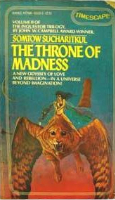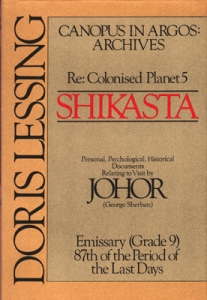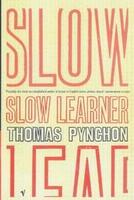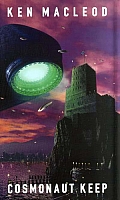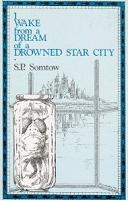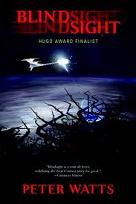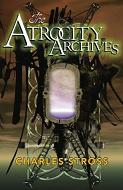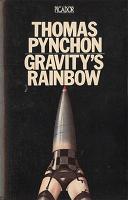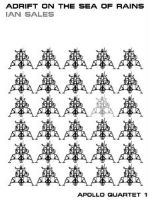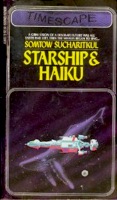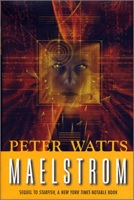 Now here’s a book I tried to avoid. Not because I don’t like Neil’s writing, most of it agrees with me, or because I don’t like Mythology, Norse or otherwise (I quite do), but I turned down an electronic review copy because I expected there be endless reams to be written about it (there were indeed), and it to sell like hot cakes anyway, without any publicity by myself (oh, and didn’t it just). Plus, I really have enough to read and write about, or so I thought.
Now here’s a book I tried to avoid. Not because I don’t like Neil’s writing, most of it agrees with me, or because I don’t like Mythology, Norse or otherwise (I quite do), but I turned down an electronic review copy because I expected there be endless reams to be written about it (there were indeed), and it to sell like hot cakes anyway, without any publicity by myself (oh, and didn’t it just). Plus, I really have enough to read and write about, or so I thought.
Others thought otherwise, though, and so here I am with a signed copy, and, as I’m wont to, an opinion after reading it. Even if it’s been 3 months since the book came out.
So, hype aside, what is this about, then? I mean, Neal has been writing about Norse Mythology, and using its characters and tropes in his oeuvre for a long time - quite openly in the Sandman series, or in Odd and the Frost Giants, but as an influence in many other parts and stories, too. But this here is the full treatment, with focus, of course. And, from his introduction, it sounds like the main aim for him was to share his fascination with this body of mythology, and animate people, many people, to join in and start reading more of the topic.
Also - I really don’t see a point in introducing the author, Neil Gaiman, who has been described as the SF Rockstar before. I don’t think there are any in the current crop of genre writers who have anything like his reach and success in the mainstream - the late Terry Pratchett might have come close, but otherwise you’re going back to Vonnegut, Ballard, or maybe Asimov.
The book starts with an introduction where Neil explains how he originally became aware of the Norse Pantheon and Myths (Stan Lee, in a nutshell), and where he went from there. What is available to us from the original sources (his comparison is that it’s like we only had the tales of Theseus and Heracles from the bodies of the Greek and Roman mythology), and which sources he used for this re-telling.
And, to be very clear, even if the expectation is that most of the Norse stories have been lost, there are more than what is in this volume - this is Neil’s selection, and if you like it (and I’m sure you will) then go and read more.
Then we get a section called The Players, which is an introduction of the main protagonists in the story - he sticks to Odin, Thor, and Loki for this purpose (and for the stories he picked). This brought some surprises - reading the description of Odin made him sound like the Patron Saint of Futurism, minus the technology fetish (he was rather into magical artefacts, though). Or who knew that Thor had a son who used skis? Not me, evidently. Loki is, as expected, a complicated figure, much more so that the cartoon cut-out from his comic et al incarnation.
The next parts are Before the Beginning, and After Creation (the creation myth, with the usual contradictions these seem to have) and Yggdrasil And The Nine Worlds, describing the world tree Yggdrasil and its roots in the nine worlds, and some focus on the Norns who shape everybody’s lives
After that we delve into the actual stories Neil selected to re-tell, which are:
Mimir’s Head and Odin’s Eye
As the title says - the story of how Odin traded one of his eyes for wisdom, and of how Mimir, Guardian of the Well of Wisdom, lost his head. And to be clear, these events are not directly connected, ie two separate stories.
The Treasures of the Gods
And here we go with a first story of Loki - when Sif’s (Thor’s beautiful wife) golden hair disappears over night Thor does not mess about: “When something goes wrong, the first thing I always think is, it is Loki’s fault. It saves a lot of time.” Quite.
It is also the story of how Thor got his hammer, and how it is ever so different from the one in the more ‘modern’ readings…
The Master Builder
Another story of less than ideal advice of Loki to the Gods, leaving the Gods with a protective wall around Asgard, and Odin with his fabled 8-legged steed, Sleipnir. The way this came about also leaves Loki with a grudge to nurture, never a good thing…
The Children of Loki
There are some more key characters here - the World Snake Jormungundr, the half dead girl Anyrboda, queen of the underworld and all who do not go to Valhalla, and the wolf Fenrir, who, betrayed by the Gods, will eat the Sun and kill Odin at Ragnarok. Now that’s what we call offspring!
Freya’s Unusual Wedding
Mischief! Cross Dressing! Violence! Feasting! A cracker of a tale…
The Mead of Poets
A tale of murder, and adventure, and derring-do. And what an ending!
Thor’s Journey to the Land of the Giants
A story of a trip, of a contest of abilities, and of Thor (easily) and Loki (much harder) getting tricked.
The Apples of Immortality
A Loki story again, but with more complexity; it shows how even with the Gods and the Giants there are rules that must be followed, and how misdeeds must be balanced and dealt with in accordance with these.
The amount of casual violence, killing, threats, and eye-for-eye revenge is amazing, and decidedly Old-Testament level
The Story of Gerd and Freya
I guess you could call this a love story with a happy ending, except for its negative connotations for Ragnarok… but then everything the Gods do or don’t has an effect on the final battle, of course.
Hymir and Thor’s Fishing Expedition
Thor giving it large - I don’t think there’s any other way of describing this… he is a force of nature, and a bit of a loose cannon himself.
The Death of Balder
This is Loki turning evil, causing the death of the wisest, most beautiful son of Odin - and then scuppering the attempt to bring him back from Hel, the land of the dead.
The Last Days of Loki
Loki gets his just deserts, or what the Gods consider such. It’s all very cruel, and very allegorical.
Ragnarok: The Final Destiny of the Gods
It’s the End Of The World, nothing less
This is followed by a Glossary of people, places, and concepts, for those who need a reference.
Overall I found it interesting how he told these stories - there is direct speech used when needed, but they are not dramatised, or heavily fictionalised. These are factual (well…) re-tellings, and I rather liked the style - this is storytelling around a fire, not Hollywood CGI drama overload.
On a general note, this is an easy and absorbing read. A page turner, literally, which keeps you in thrall and going even if you actually wanted to stop. Grand storytelling! And I hope, like Neil, that this indeed animates many more people to start reading more on the topic.
More Neil Gaiman
Title: Norse Mythology
Author: Neil Gaiman
Reviewer: Markus
Reviewer URL: http://thierstein.net
Publisher: Bloomsbury
Publisher URL: http://www.bloomsbury.com
Publication Date: Feb 2017
Review Date: 170507
ISBN:9781408886816
Pages: 278
Format: Hardback
Topic: Mythology
Topic: Norse

